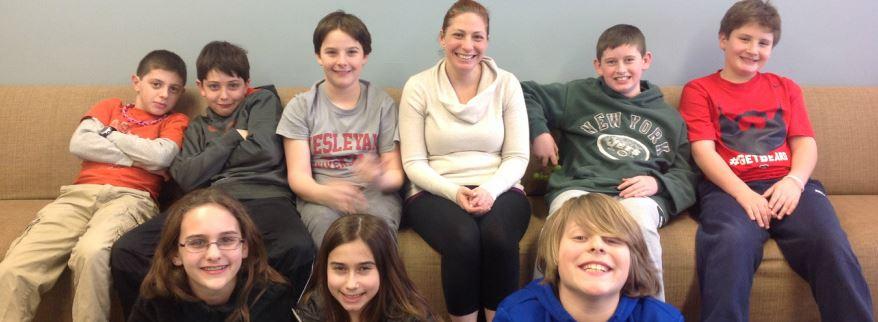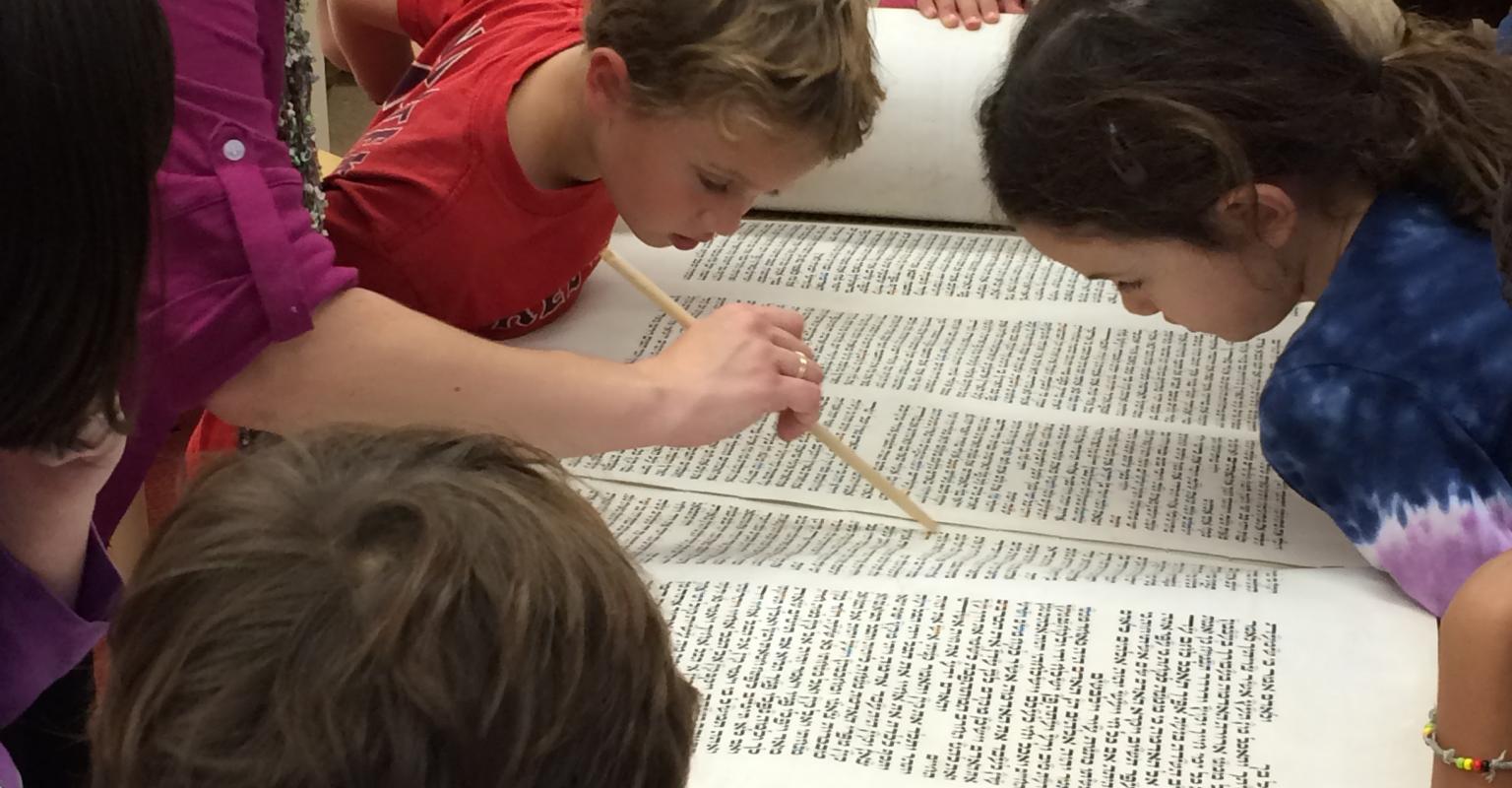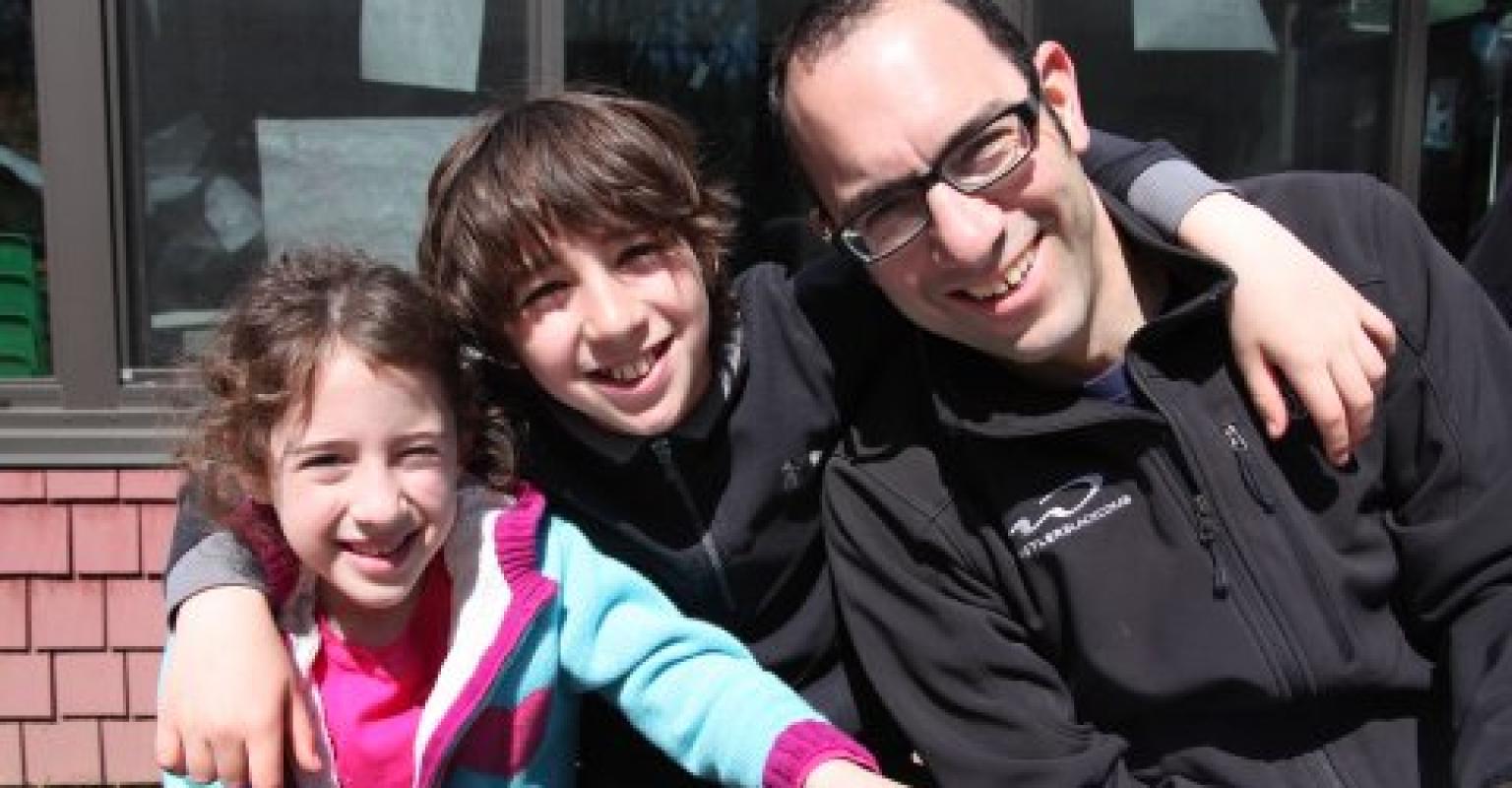Family Learning Model: Chavurah
Community Synagogue of Rye (CSR), Rye, NY

Model Summary:
Chavurah is an alternative model for learners in 5th-7th grade and their families that builds community through meaningful Jewish learning and lived experiences. Learners meet weekly with a moreh derech (guide/teacher) in each other’s homes as well as around town to explore Jewish answers to everyday questions. Locations are selected based on content to be studied. There is also a monthly learning opportunity for the whole family as well as touch points throughout the year with the greater synagogue community and Hebrew tutoring via skype.
Who are the Learners?
-
Learners: The Chavurah model sees the whole family as learners on a journey together. While some members of the family will meet more often than others – 5th, 6th, and 7th graders every week in groups of 8-10 learners, parents and siblings once a month – the whole family is committing themselves to be a part of this exciting new way to experience Jewish learning and living.
- Cohort: The goal is to bring together families who can work well as a team are open to trying new things, and who will contribute to the group in a way that strengthens learning and builds community.
Who are the Educators/Learning Facilitators?
- Each Chavurah will have a moreh derech (guide) who will coordinate and facilitate learning experiences.
When Does the Learning Happen?
-
5th, 6th, and 7th graders meet once a week for 2 hours with their moreh derech.
-
They have a Skype appointment once a week with the Hebrew tutor and are expected to complete their Hebrew practice and homework before their next Skype session.
-
5th and 6th graders, sometimes with their families, join the congregational community once a month.
-
The whole family participates in an active Jewish learning experience once a month.
- The Chavurah, in coordination with their moreh derech, will decide together which afternoon the 5th, 6th, and 7th graders will meet. When the Chavurah comes together as full families, these meetings will sometimes take place over Shabbat (Friday evening, Saturday morning, or Saturday evening) or other times on a Sunday.
Where Does the Learning Happen?
Learning with the Chavurah can happen in any number of places – in the homes of the Chavurah members, the synagogue, a local park, a museum, or other appropriate destinations. The Chavurah identifies settings that provide real-life context for the learning (e.g. a bookstore to look at biblical images of Judaism).
What is the Learning? How is it Designed?
The Chavurah is an alternative model for 5th, 6th, and 7th-grade families. It builds community through meaningful Jewish learning and lived experiences. It has three main components:
-
Weekly Mifgash (Meeting): 5th, 6th, and 7th graders will meet ("mifgash") weekly in various settings. They'll explore Jewish answers to their everyday questions, as well as their questions about specific Jewish content areas.
-
Family Limmud (Learning): Once a month, the whole family will come together for a family learning ("limmud") experience. As role models for their children, parents will play active roles as both learners and educators.
-
Community Kesher (Connection): Throughout the year, the Chavurah will connect ("kesher") with the larger synagogue community. This includes experiences for the whole family, as well as opportunities for the 5th, 6th, and 7th graders to connect with other, non-Chavurah students.
- In addition to guiding the framework of the model, the morei derech design the units and/or mifgashim using the whole-person framework of Knowing-Doing-Believing/Valuing-Belonging (KDBB), and paying attention to targets (learner outcomes).
What Were You Trying to Achieve with this Model?
This model was designed in coordination with the LOMED Education Leadership Team. One of the rabbis suggested that this type of model might work well for the congregation, due to the experiential nature of the learning and the community-building power of chavurot. Additionally, the population of the congregation is separated into two different geographic areas, and these chavurot allow families to form close connections with other families who live nearby.
Key First Steps and Recruitment Plan:
-
There is a recruitment plan that includes two information sessions for prospective families.
- These sessions include testimony from current Chavurah families as well as a PowerPoint presentation.
Role of governance and Clergy:
Currently, the clergy does not regularly interact with the model, though the families have asked for that to change.
Budget:
-
Due to the lived experience nature of the mifgashim baderech (meetings on the path) and many of the Family Limmud sessions, the budget for a Chavurah group can be bigger than the budget for a traditional class. Beyond standard supplies that each morah derech will need to take to each home/environment, there may be entrance fees or program costs associated with some mifgashim.
-
A budget should be established for each Chavurah group at the beginning of the year and shared with the morei derech.
- Tuition for Chavurah includes a $180 activity fee for each family to cover some of the expenses and to reduce administrative details.
Hiring Needs:
-
The learning facilitator in the Chavurah model is not a typical educator. He or she has two main responsibilities: uncovering the questions of the learner and building learning around those questions.
- The first area is explored by the morei derech as a team through professional learning throughout the year; the second requires both breadth and depth of Jewish pedagogical content knowledge. She or he should be able to know where to look when tasked with designing learning around various topics with relatively little advanced notice.
Relationship of Model to Congregational Learning System:
Chavurah is an alternative to a more traditional two-day a week model for learners in 5th, 6th, and 7th graders and their families.
How Do You Describe Your Congregation?
Reform congregation with 500 families, and three clergies. Inspired by Jewish teachings and traditions, CSR seeks to be a center for spiritual transformation; to foster the creation of sacred relationships. And to give people the tools and resources to be God’s partner in healing the world. The vision is guided by our commitment to the Jewish values of worship (tefillah), lifelong learning (Talmud Torah), community (Kehillah), loving-kindness (Hesed), repairing the world (Tikkun Olam), and love of Israel (Ahavat Yisrael).
Supplementary Materials Include:
- Models-In-Action
- Intergenerational Learning
- Shabbat
- Hebrew
- After School and Beyond
- Congregational Learning
- Family Engagement
- Educator Training
Discover more

Family Learning Models focus on families both learning and growing Jewishly through shared experiences and study.

Mayim, our initial example of "Additional" Models, could be placed in a Multi-aged, Project-Based Learning, or Experiential Learning bucket. Mayim is a K-5 learning community in which depth of relationships and depth of learning are intentionally fostered and visible everywhere.

Temple Adat Elohim, Thousand Oaks, CA. Families come together twice a month, once to experience Shabbat as a B’Yachad community and another time to help heal the world by participating in Tikkun Olam (repairing the world) projects
